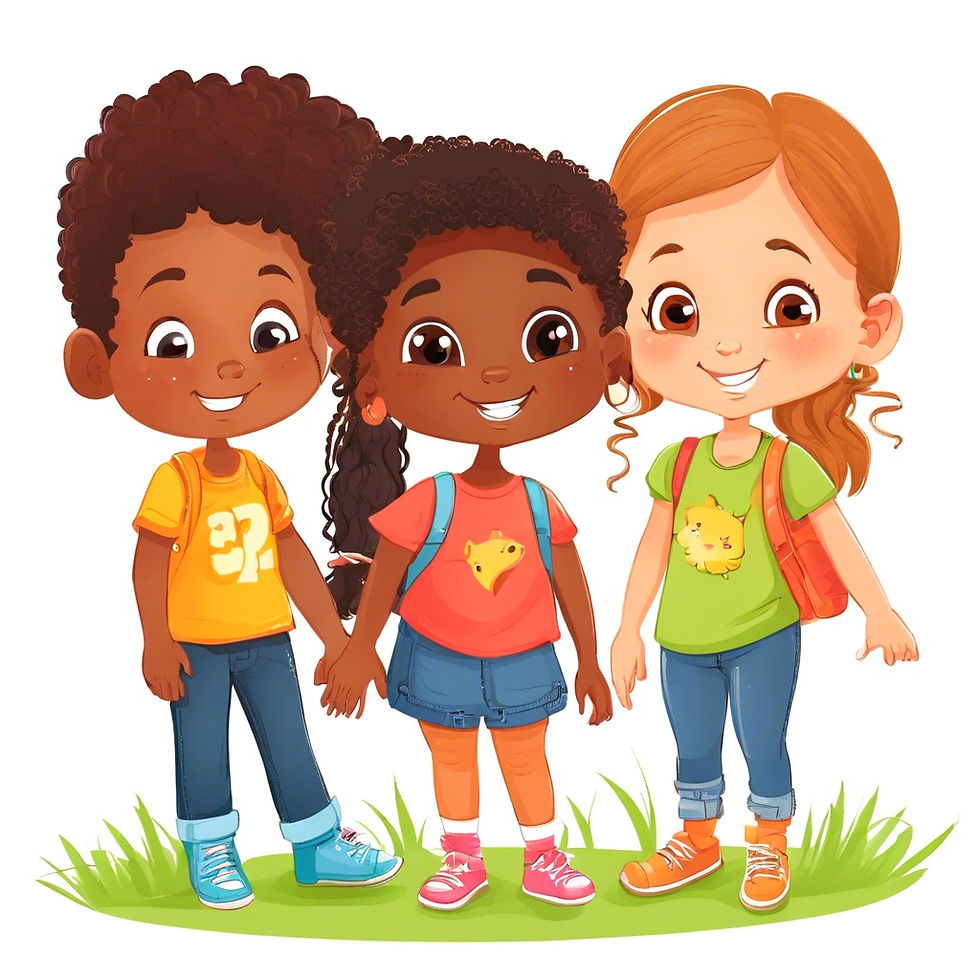Exploring the Power of Friendship in Children's Storytelling: A Writer's Perspective
- Leon Mitchell

- Nov 23, 2024
- 3 min read
As a children’s author, I frequently think about what makes stories connect with young readers. The theme of friendship stands out as a powerful way to build connections, empathy, and understanding. In this exploration, I will examine why friendship is vital in children's storytelling and how it shapes the hearts and minds of young readers.
The Role of Friendship in Children's Development
Friendship is an essential part of childhood. It teaches children important social skills, emotional intelligence, and the value of working together. When children read stories focused on friendship, they gain insight into the dynamics of their own relationships. These narratives reflect the joys and challenges of their friendships.
For instance, a study found that children who read books emphasizing friendship develop better emotional skills and empathy. Reading about characters who support each other and resolve conflicts can help them understand kindness and acceptance. These themes can spark conversations about feelings and interactions, preparing children for their own friendships.
Crafting Relatable Characters
As a writer, my goal is to create characters that children can identify with. When characters form friendships, it makes their journeys more engaging.
Take “Winnie the Pooh,” for example. The bond between Pooh and his friends perfectly captures the essence of companionship. Their interactions encourage young readers to explore their friendships, making it easier for them to recognize their own experiences.
Characters who face various challenges in their friendships—such as conflicts or joyful discoveries—offer a complete picture of what friendship is about. Writers can show how these bonds evolve through experiences, allowing readers to connect emotionally and learn valuable lessons.

The Impact of Friendship on Plot Development
Friendship enriches both character development and plot progression. The relationships between characters often drive the story forward, creating tension and resolution.
In many children's books, friendships lead to exciting adventures, problem-solving, and personal growth. For instance, in “The Amazing World of Gumball,” characters band together to tackle challenges, illustrating teamwork and loyalty. These stories emphasize the idea that friends can achieve great things together.
As writers, we have the opportunity to create narratives where the nature of friendship shapes the outcome. This not only enhances the plot but also highlights the importance of collaboration, a vital lesson for young readers.
Fostering Emotional Connections
When children encounter stories focused on friendship, they develop emotional connections with the characters. This connection creates a deeper engagement with the narrative, as children start to care about what happens to their friends in the story.
A great example is “The Giving Tree” by Shel Silverstein. This story illustrates the sacrifices made in friendships and leaves a lasting impression on young minds. Such narratives encourage discussions about compassion, selflessness, and the beauty of giving.
This emotional layer enriches children's literature, making it more than just entertainment; it fosters emotional literacy. As authors, we should use this power to craft stories that resonate with young readers on a personal level.
Diverse Representations of Friendship
In our diverse world, it is essential to showcase various forms of friendship in children's stories. Representing different cultural backgrounds, family dynamics, and ways of forming connections promotes inclusivity and empathy.
Stories that reflect diverse friendships help children appreciate the richness of human connections beyond their own experiences. For example, series like “Hilo” by Judd Winick showcase friendships between children of differing backgrounds, allowing readers to learn from each unique relationship.
This representation is vital for broadening young readers' perspectives and fostering understanding. As writers, we have the responsibility to depict friendships that reflect the world they inhabit.

Creating Lasting Messages Through Friendship
The stories we tell often remain with readers long after they have turned the last page. Friendship is a recurring theme that carries powerful messages for children.
When young readers engage with stories that highlight love, loyalty, and the importance of relationships, they internalize these lessons. Research suggests that children exposed to stories about friendship are more likely to display compassionate behaviors in their lives.
As authors, it is crucial to harness storytelling's enduring nature to create narratives that inspire and teach valuable life lessons about friendship and human connections.
Final Thoughts
The theme of friendship plays an essential role in children's storytelling. It enhances character development, drives plots, fosters emotional connections, embraces diversity, and imparts lasting messages.
As children's authors, we can shape the perspectives of young readers through our narratives. By focusing on the power of friendship, we can create stories that both entertain and educate. Let us remember that the friendships we depict in our books are more than just plot devices; they form the foundation of emotional growth and social understanding for our readers.
In all our storytelling, let friendship be the thread that connects our narratives and leaves a lasting impact on young readers.
Leon Mitchell, children's and teen author.




Commentaires